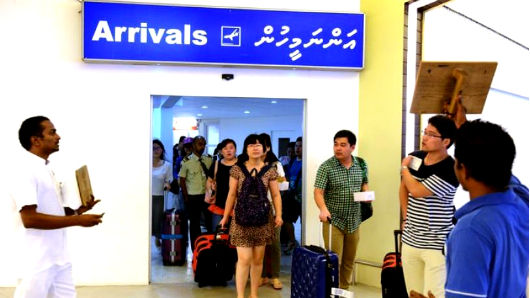Tourist arrivals increase in July despite decline in Chinese visitors
Arrivals from China declined last month by 4 percent compared to July 2014. However, Total arrivals from January to July rose 1.7 percent compared to the corresponding period in 2014, reaching 713,622 visitors by the end of July.

30 Aug 2015, 9:00 AM
Tourist arrivals increased by 4.3 percent in July compared to the same period last year, reaching 104,517 visitors during the month. However, arrivals from China declined by 4 percent compared to July 2014.
With a 30 percent market share, Chinese tourists accounted for nearly one-third of arrivals in 2014 and currently represents the single biggest source market for tourists to the Maldives.
Chinese arrivals fell from 43,269 in July 2014 to 41,527 last month, according to statistics from the tourism ministry.
Total arrivals from January to July meanwhile rose 1.7 percent compared to the corresponding period in 2014, reaching 713,622 visitors by the end of July.
Become a member
Get full access to our archive and personalise your experience.
Already a member?
Discussion
No comments yet. Be the first to share your thoughts!
No comments yet. Be the first to join the conversation!
Join the Conversation
Sign in to share your thoughts under an alias and take part in the discussion. Independent journalism thrives on open, respectful debate — your voice matters.




